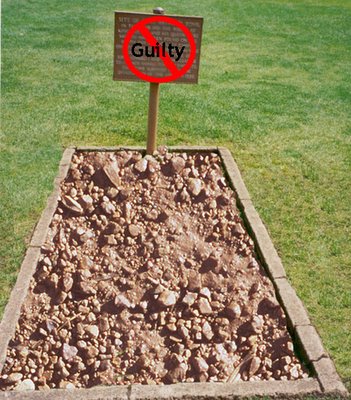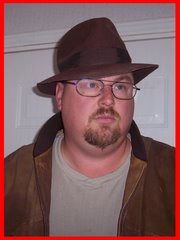 Back in the early nineteenth century the justice systems of the world acted much more quickly than they do now. Trial, sentencing, and execution of the sentence often took only days. For that reason it is sensible to assume that many an innocent man was put in jail or worse yet, executed. The innocent man legally killed by the state is often a hard thing to prove -- especially if you are the dead man! Here is an interesting case of one dead mans proof…
Back in the early nineteenth century the justice systems of the world acted much more quickly than they do now. Trial, sentencing, and execution of the sentence often took only days. For that reason it is sensible to assume that many an innocent man was put in jail or worse yet, executed. The innocent man legally killed by the state is often a hard thing to prove -- especially if you are the dead man! Here is an interesting case of one dead mans proof…In the early 1820s a young Englishman named John Davies entered the Welsh town of Montgomery looking for work. He soon found employment with a widow woman working her farm, the two soon fell in love and planned to marry. One day while peacefully walking down the road he was accosted by two ruffians demanding money. Davies refused the thugs’ request and a fight broke out. Not only was Davies beaten up and robbed but his muggers carried him off to the neighboring `town of Welshpool, where they insisted to the local constable that he had tried to rob them. In short order the Welsh authorities, never particularly fond of the English, had sentenced young Davies to die on September 6th 1821, for highway robbery. As the noose was being placed around his neck Davies held up his right hand and declared that an innocent man was being sent to his grave.
“I die,” said he, “praying to God Almighty the He will let no grass grow on my grave and with that He will so prove my innocence.”
John was hanged buy the neck until dead. He was then buried in the Montgomery parish churchyard alongside rows of other graves – all of which were covered with grass. But Davies’s plot remained barren. Local authorities tried topping the grave with green sod, but it soon turned brown and died. Next grass seed was tried but none ever took root and sprouted.
Some thirty years later, in 1852, the cemetery was landscaped. All the graves were covered with two feet of fresh soil and grass seed was planted. Soon the entire area was lush and green. All was lush and green that is except for one rectangle of area, right above where John Davies had been buried. This small patch of dirt stayed brown and no amount of seed or fertilizer could change that. Eventually the area was fenced off and left to stand, lonely and barren, a silent testimony to one mans innocence.
That story sends a chill down my back when I think about it. And if that were all there were to this story that would be weird enough, but there is a little bit more. In 1856 another person was put to death and buried in the newly re-landscaped cemetery. This time a widow woman, Judith Haun, went to her death claiming her own innocence. The plot marking her burial was just a few yards away from that of Davies and like his, her grave site never greened over and remained barren earth. A fence was soon erected around her plot just as had been done for Davies. Two years later both grave sites were barren but for a single vine of ivy that had grown in each plot and made its way to the other’s grave entangling one with the other in a thickly tangled maze. The two ivy plants made their way ONLY to the other grave site and not to any other. Oh and by the way Judith Haun was the widow women John Davies had worked for and had planned to marry! Big time shiver down my spine! What a truly weird but wonderful world in which we live.
I’m Average Joe
mailto:OurWeirdWorld@gmail.com


No comments:
Post a Comment